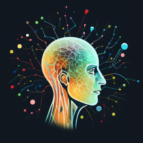This article explores how the biohacking movement is utilizing wearable devices to optimize health and performance. We’ll discuss the types of wearables used, the key biomarkers tracked, how they run experiments and test interventions with the data, examples of optimizations they’ve achieved, and the need for balance when leveraging these self-tracking tools. In summary, we’ll cover how biohackers are taking advantage of always-on physiological data from devices like Fitbit and Apple Watch to gain insights into improving sleep, cognition, fitness, and more. New to Biohacking? Checkout our beginner friendly Article, Biohacking 101.

How Biohackers Are Using Wearables to Optimize Health
I can’t tell if it’s the edgy campaign structure, or the bad boy rebel persona that often accompanies the phrase “BIOHACKING” but like a train headed downhill, it’s gaining steam and it looks like it’s here to stay. The biohacking movement of leveraging both digital and biological data for human health and fitness has enthusiastically adopted wearable devices to access granular biomarkers and inform lifestyle interventions.
The Rise of Self-Tracking with Wearable Devices for Optimization
The origins of biohacking lie in the quantified self movement which applies self-tracking to optimize health, cognition, performance, and wellbeing. Wearable devices that allow continuous physiological monitoring have become tools for health enthusiasts. By quantifying biomarkers through these devices, biohackers can identify opportunities, experiment with changes, and iterate towards improvements.
Wearable Devices Provide 24/7 Metrics
Fitness Trackers As Daily Health Monitors
Devices like the Fitbit now offer complete activity tracking and sleep stage monitoring. Key metrics like step count, calories burned, resting and workout heart rate, and time spent in REM/deep sleep provide comprehensive lifestyle data. These metrics highlight areas that need improvement and provide baseline data.
Smartwatches for Dynamic Tracking
Smartwatches like the Apple Watch and Oura ring go beyond step counting to provide more dynamic tracking during exercise and sleep. Their heart rate variability and workout tracking features help biohackers optimize exercise routines by quantifying intensity and recovery needs.
Advanced Wearables Reveal More Biomarkers
Dedicated fitness trackers only reveal so much. To access more biomarkers, biohackers use advanced wearables like Levels for continuous glucose monitoring, blood oxygen sensors during sleep, and EEG headbands to track brain activity. Having access to these additional signals opens up more avenues for experimentation and optimization.
Tracking Key Physiological Metrics with Wearable Devices
By continuously tracking several metrics through their wearable toolkit, biohackers can extract insights into the effects of interventions:
- Activity Levels-Steps taken, calories burned, and dedicated workout statistics help quantify changes in daily activity levels in response to new regimens. This data highlights opportunities for increased movement.
- Heart Rate Variability for Recovery- Heart rate variability (HRV) is a key metric that provides insights into cardiovascular recovery and sleep quality. Lower HRV indicates a need for more recovery time between workouts and avoiding overtraining.
- Sleep Stages and Quality- GRANULAR sleep stage data including light sleep, deep sleep, and REM timing helps identify issues with sleep quality. With this data, biohackers can test changes in nighttime routines and environments to improve sleep.
- Additional Biomarkers- Access to additional metrics like blood oxygen saturation, respiratory rate, and body temperature during sleep provides further data points for optimizing sleep health and apnea.
Testing Interventions and Tracking Impact-
Armed with all this data, biohackers leverage wearables to identify correlations, run experiments, and quantify the effects of interventions:
- Finding Lifestyle Correlations- Continuous biometric data helps uncover correlations between lifestyle factors like diet, exercise, stress, and outcomes like HRV, sleep, recovery etc. Reduced caffeine intake showing an increase in HRV would be an example.
- Iterative and Controlled Experimentation- Having granular data enables biohackers to rapidly test interventions like new supplements or sleep schedules in a controlled, iterative manner while tracking the physiological impact. Repeated cycles of this process over weeks or months helps hone in on optimal regimens.
- Quantifying the Effects of Changes- Wearables allow objectively quantifying the effects of interventions like taking a new pre-workout supplement or adhering to a biphasic sleep schedule. Being able to confirm that a change led to real, measurable improvements motivates biohackers.
- Optimizing Sleep, Exercise, and Cognition- Here are some examples of biohackers using wearable-driven insights: Optimizing evening routines led to a 37% improvement in deep sleep. Tailoring workouts and recovery using HRV data improved 5K times by over 4%. Tracking focus hours using EEG led to longer productive deep work sessions.
Ensuring Balance with Self-Tracking
However, restraint is required to avoid going overboard:
- Information overload – Tracking too many signals can get overwhelming. Focus on metrics aligned with your personal goals.
- Obsession – Do not get overly obsessed with perfect optimization daily. Use data judiciously.
The Future of Biohacking with Wearables
All things considered, wearable devices provide the key capability for biohackers to track, iterate, and optimize their biology. As sensors and analytics platforms evolve, there is potential for more granular insights into human performance. Focus, balance, and smart goal-setting will be key to harnessing these self-tracking tools.
Conclusion
New technologies are enabling a new paradigm of optimizing health and performance through access to continuous personalized biometric data. Altogether this allows biohackers to embark on a self-experimentation journey with data driven rigor. While promising, restraint and focus are necessary to use this power responsibly.
If you have any questions about what we do CLICK HERE to learn more about us! If you would like to reach us for questions, comments, or concerns- please CLICK HERE to contact us directly!
SUBSCRIB
Lorem ipsum dolor sit amet, consectetur adipiscing elit. Ut elit tellus, luctus nec ullamcorper mattis, pulvinar dapibus leo.
